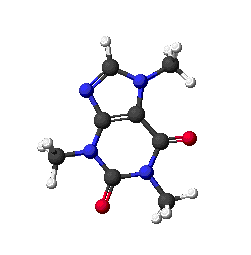
Chemistry
Chemistry 16: 1-4

Homework
Chemical Equilibrium and Concentration
Chapter 16: 1-4 Homework
- Reading Preparation
- WebLecture
- Study Activity
- Preparation work for chat
- Online Quiz
- Lab Instructions
Reading Preparation
Textbook assignment: Read Kotz and Triechel, Chemistry and Chemical Reactivity Chapter 16: Sections 1 to 4.
Study Notes
There are three common definitions of acids and bases, the Arrhenius theory, the Brønsted-Lowry theory, and the Lewis theory. In all three, acids donate or promote the concentrations of hydrogen ions (H+ protons). Bases may accept these ions, or promote the concentration of hydroxide ions (OH-) .
- 16.1 The Arrhenius definition describes an acid as any substance which, when dissolved in water, increases the H+ ion concentration. The Brønsted-Lowry concept identifies acids as proton donors. In Brønsted-Lowry terms, hydrochloric acid HCl acts as a proton donor. Some molecules, such as H2SO4 have multiple protons which they can donate, and so are polyprotic acids.
When an acid and base interact, the resulting products are also an acid-base pair. If HCO3- reacts to accept a proton, it is a base, but the H2CO3 molecule it forms is an acid capable of donating an H+ in the reverse reaction. - 16.2 The reaction for dissociation of water molecules is
The equilibrium constant Kw thus equals but our rules define [H2O] = 1.So Kw simplifies to which experimentally is 1 * 10-14.
In a neutral solution, [H3O+] = [OH-], so the concentrations at neutralization must be 10-7 to be equal and give Kw = 1 * 10-14. If we express the concentrations [H3O+] as 10-a and [OH-] as 10-b, a + b = 14. Increasing b decreases a. Chemists use these exponents as shorthand for the concentration of acids and bases:
- 16.4 In a acid reaction where HA+ H2O → A- + H3O+, the equilibrium constant will be
In a base reaction where B + H2O → BH+ + OH-, the equilibrium constant will be
How much an acid dissociates determines whether it is a weak acid (there is only a small change in HA concentration) or a strong acid (the HA concentration drops to near zero). The strength of the conjugate base will be inversely related to the strength of the acid: the stronger the acid, the weaker the conjugate base. - 16.4 In an acid-base reaction, the cation of the base and the anion of the acid form a salt, and the donated H+ and OH- form neutral water: NaOH + HCl → NaCl + H2O.
Key Formula
| See the Chemical Formulae in the notes above |
|---|
Web Lecture
Read the following weblecture before chat: Acids and Bases Revisited
Study Activity
Videos for Chapter 16: Principles of Chemical Reactivity: The Chemistry of Acids and Bases
Review the Videos at Thinkwell Video Lessons.
- Under "ACIDS AND BASES"
- Acid-Base Concepts
- Arrhenius/Brønsted-Lowry Definitions of Acids and Bases
- Hydronium, Hydroxide, and the pH Scale
- Acid and Base Strengths
- Strong Acids and Bases
- Acid-Base Concepts
Interactive Simulation
- Work through the introduction exercises by creating strong and weak acids and bases. Use the pH meter, litmus paper, and simple circuit to see how pH and electric conductivity change for each type of solution.
- View the changes to graphic representations of these data.
- Then use the "My solution" option to set the concentrations for your solution for acids and bases. What happens to the pH?
Chat Preparation Activities
- Essay question: The Moodle forum for the session will assign a specific study question for you to prepare for chat. You need to read this question and post your answer before chat starts for this session.
- Mastery Exercise: The Moodle Mastery exercise for the chapter will contain sections related to our chat topic. Try to complete these before the chat starts, so that you can ask questions.
Chapter Quiz
- There is no chapter quiz YET.
(Aligns to) AP #12 GUIDED INQUIRY — Determining the rate law — Phase III
Complete your data analysis and submit a formal report of your results.
Resources:
- IGHCE Lab 12.3 Determination of the effect of Concentration on Reaction Rate
- HSCKM VI-3 Determining a Reaction Order
- APGIE Investigation 11: What Is the Rate Law of the Fading of Crystal Violet Using Beer’s Law
- There is no alternative form of this lab.
© 2005 - 2025 This course is offered through Scholars Online, a non-profit organization supporting classical Christian education through online courses. Permission to copy course content (lessons and labs) for personal study is granted to students currently or formerly enrolled in the course through Scholars Online. Reproduction for any other purpose, without the express written consent of the author, is prohibited.